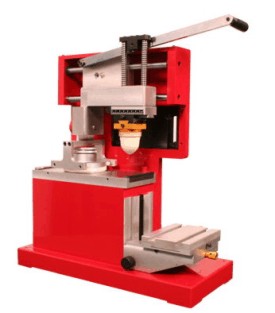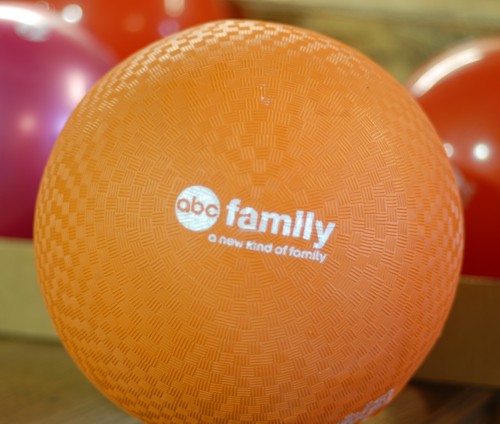Rotary Printing
Offset Lithography
Offset lithography was developed over 100 years ago as a method of mass production of printed items. The method was designed so that each copy of the printed item coming out the printer, would be identical to the other. This made the method suitable for printing newspapers and has since developed to undertake the capabilities of web printing - that is - printing on a giant continuous roll of paper, and it is this method of printing that is so vital in providing John Smith with his paper every morning. The machines can be as big as houses (especially for printing newspapers) and it can only be assumed that they are extremely highly maintained due to their upmost importance in printing the national news every day. As well as this extreme industrial standard of printing, the method is also used for mass production of other printed items such as posters and fliers, and basically any stock that will flow through the printing rolls. However, paper tends to be the most prominent choice of stock.
The process works by rolling 4 'etched' pieces of sheet metal that have the chosen design inked out on them (4 as each sheet constitutes the primary printing colours of cyan, magenta, yellow and key (black)). The process relies on water and oil to determine where ink should appropriately sit on said pieces of sheet metal. The design is inked onto a roller which subsequently rolls it onto a rubber roll connecting with it that finally prints it on the paper. The diagram above should explain.
Industrial Lithographic Printer used for Commercial Printing. The machine is as long as two hummers and weighs the same as three. This can print out 10,000 double sided photo colour quality brochures in less than 3 and a half hours.
Here is a video explaining the litho printing process which I found on youtube. It focusses on lithography used for commercial printing and also on offset lithography. This breaks it down and us easier to understand for me when seeing it visually...
How Offset Differs From Desktop Printing - The three primary differences in offset printing and desktop printing (such as inkjet and laser) are the colors of ink and the way the ink is placed on the paper as well as the type of machinery used to accomplish the task.
Preparing Files for Offset Printing - When you send a digital file out for film or printing more goes along than just your PageMaker or QuarkXPress document. You may need to send fonts and graphics too.
Book Paper - Offset papers are especially suitable for offset printing due to increased resistance to water and picking. Most book paper can be used on offset presses.
Printing the Color White - Most inks used in offset printing are translucent therefore a translucent white ink would not cover a dark color. Explore what your ink and printing options are for printing in white.
Examples of Offset Lithography...
Four Colour Offset Print for printed materials for Unicef...
What is Intaglio Printing?
Normally, copper or zinc plates are used as a surface or matrix, and the incisions are created by etching, engraving, drypoint, aquatint or mezzotint. Collographs may also be printed as intaglio plates.
Rotogravure
Rotogravure (Roto or Gravure for short) is a type of intaglio printing process; that is, it involves engraving he image onto an image carrier. In gravure printing, the image is engraved onto a cylinder because, like offset printing and flexography, it uses a rotary printing process. Once a staple of newspaper photo features, the rotogravure process is still used for commercial printing of magazines, postcards, and corrugated (cardboard) product packaging.
Rotogravure is better than lithography for longer print runs because it uses copper plates which are much more durable and will last for longer. An interesting fact is that Stamps and Bank Notes are used using this method.
I found this video of an industrial rotogravure printer in production. I still can't quite believe how it can print this fast...
Amber shown us this video of a printer from PAZZAZ printing and how he feels about print. The video is obvioulsy tounge in cheek but I can relate to some of the things he's saying. A personal favourite part is where he say 'I love the smell of ink! I spread that S*** on my toast F****** toast in the morning!". PRINTS NOT DEAD Y'ALL...
Flexography
Frequently used for printing on plastic, foil, acetate film, brown paper, and other materials used in packaging, flexography or flexographic printing uses flexible printing plates made of rubber or plastic. The inked plates with a slightly raised image are rotated on a cylinder which transfers the image to the substrate. Flexography uses fast-drying inks, is a high-speed print process, can print on many types of absorbent and non-absorbent materials, and can print continuous patterns (such as for giftwrap and wallpaper).
Some typical applications for flexography are paper and plastic bags, milk cartons, disposable cups, and candy bar wrappers. Flexography printing may also be used for envelopes, labels, and newspapers.
This video breaks it down to understand easier and starts to talk about the flexographic printing machines. The machines can quickly print great quality onto various different type of materials and can produce up to 4 miles of printed product every hour.
Each colour has a separate plate on the machine and it can print up to 10 different colours. The flexo printer can achieve almost any colour using the four colour CMYK process. They also used matching PANTONE colours for outside of CMYK. They also use a cutting dye to trim down the labels once printed.
Examples
Lithography
Lithography Principles
Client:Arsenal FC
Materials:Greyboard
Processes:Litho print, die cut, volume machine run
Title: Luxury retail packaging set
Client: Rapha
Materials: Paper over board, Corrugated board
Processes:Litho print, foil block, screen print.
Title: Clamshell Bx
Client: The Living Room
Materials: Grey board, litho printed sheets
Processes: Litho print, laminate, foil block
Digital Printing
Digital printing does not use an offset method. It prints straight from the printer onto a surface using a digital code. Digital printing refers to methods of printing from a digital based image directly to a variety of media. It usually refers to professional printing where small run jobs from desktop publishing and other digital sources are printed using large format and/or high volume laser or inkjet printers. Digital printing has a higher cost per page than more traditional offset printing methods but this price is usually offset by the cost saving in avoiding all the technical steps in between needed to make printing plates. It also allows for on demand printing, short turn around, and even a modification of the image (variable data) with each impression. The savings in labor and ever increasing capability of digital presses means digital printing is reaching a point where it could match or supersede offset printing technology's ability to produce larger print runs of several thousand sheets at a low price. This method is ideal for short and also specialist print runs.
This video that I found online helps me reiterate the points raised in the text above and makes it easier to understand whist also showing us some large scale digital printers of the latest technology...
The main differences between digital printing and traditional methods such as lithography, flexography, gravure, or letterpress are that no need to replace printing plates in digital whereas in analog printing plates are continuously replaced, resulting in a quicker and less expensive turn around time, and typically a loss of some fine-image detail by most commercial digital printing processes. The most popular methods include inkjet or laser printers that deposit pigment or toner onto a wide variety of substrates including paper, photo paper, canvas, glass, metal, marble and other substances. \
Screen Printing
Screen printing is a printing technique that uses a woven mesh to support an ink-blocking stencil. The attached stencil forms open areas of mesh that transfer ink or other printable materials which can be pressed through the mesh as a sharp-edged image onto a substrate. A fill blade or squeegee is moved across the screen stencil, forcing or pumping ink into the mesh openings for transfer by capillary action during the squeegee stroke.
Screen printing is also a stencil method of print making in which a design is imposed on a screen of polyester or other fine mesh, with blank areas coated with an impermeable substance, and ink is forced into the mesh openings of the mesh by the fill blade or squeegee and onto the printing surface during the squeegee stroke. It is also known as silkscreen, serigraphy, and serigraph printing. A number of screens can be used to produce a multicoloured image.
This video is useful to take us through the full screen-printing process.
Screen printing can also be used to print on 3d objects. Take this video for example below. Here we get to see a Cylindrical screen printer for printing glass cup and other cylindrical bottles.
Screen Print Examples
Pad Printing
Pad printing is a printing process that can transfer a 2-D image onto a 3-D object. This is accomplished using an indirect offset (gravure) printing process that involves an image being transferred from the cliche via a silicone pad onto a substrate. Pad printing is used for printing on otherwise impossible products in many industries including medical, automotive, promotional, apparel, and electronic objects, as well as appliances, sports equipment and toys. It can also be used to deposit functional materials such as conductive links, adhesives, dyes and lubricants.
Physical changes within the ink film both on the cliché and on the pad allow it to leave the etched image area in favor of adhering to the pad, and to subsequently release from the pad in favor of adhering to the substrate.
The unique properties of the silicone pad enable it to pick the image up from a flat plane and transfer it to a variety of surfaces, such as flat, cylindrical, spherical, compound angles, textures, concave, or convex surfaces.
This video pretty much covers the whole process and uses of pad printing.
Examples of Pad Printing


















.jpg)
.jpg)













Very Nice information but unfortunately your services is not available in Pakistan . but i
will mention here about a Pakistan company which provide same services in Pakistan including
inks,printing and aluminium plates to relocate the image onto a rubber coverlet.
For More Detail Click Link Bellow;
Off-set Printing
Great Blog, there is so much reality written in this content and everything is very hard to be argued. A top-notch blog having excellent content.Screen printing machine for cosmetic jars
Great Blog, there is so much reality written in this content and everything is very hard to be argued. A top-notch blog having excellent content.Cylinder screen printing machine for sale
Great Blog, there is so much reality written in this content and everything is very hard to be argued. A top-notch blog having excellent content.Cosmetic packing screen printing machine
Leave your comment